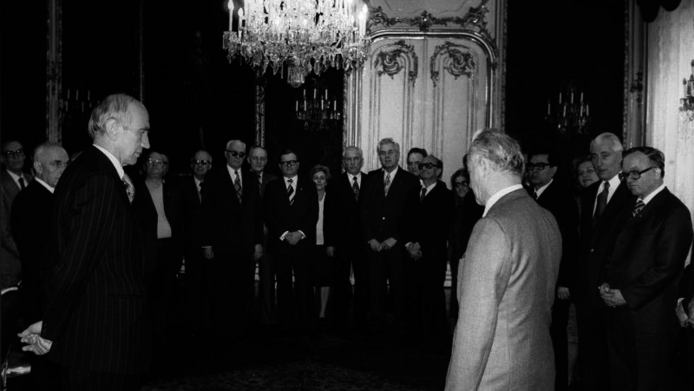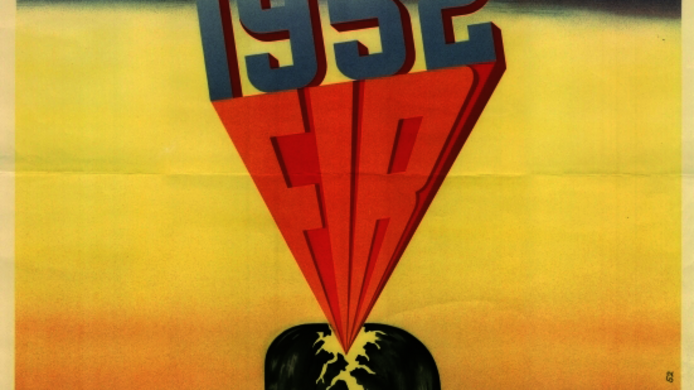Changing memories of resistance

Resistance has many facets – both national and transnational. This year, celebrations of the 75th anniversary of the end of the Second World War also include the commemoration of resistance fighters who rebelled against the Nazi regime and were imprisoned in concentration camps. But how was and is resistance remembered? “Commemoration of World War II as propagated by the Western European nation states after 1945 focused on the heroic resistance against the German occupiers,” explains Maximilian Becker of the Austrian Academy of Sciences. This “memory of resistance” dominated the so-called commemorative cultures of both individuals and society as a whole. To this day, they are expressions of collective memory. But, as the historian Becker explains, there are deficits when it comes to research on memory culture: “On the one hand, it is usually conducted at a purely national level, and, on the other, it hardly ever considers non-state players.” It does not come as a surprise, therefore, that the international umbrella organisation of associations of anti-fascist resistance fighters, the International Federation of Resistance Fighters (Fédération Internationale des Résistants, FIR for short) has not been addressed by research until now. Founded initially in February 1946 as Fédération Internationale des Anciens Prisonniers Politiques (FIAPP) in Warsaw, FIAPP moved to Vienna in 1951, where it was re-established as FIR. 2004 the FIR finally moved to Berlin.
Forgotten achievements
Scholarly investigation of the first decades of the association’s existence now brings to light many interesting facts: FIR initiated important historico-political initiatives such as International Liberation Day on 11 April, the date of the liberation of Buchenwald Concentration Camp, it published a specialist journal on the history of resistance at the end of the 1950s, made suggestions for classroom education on this topic and provided information in exhibitions about the many facets of resistance in Europe. Despite these achievements, it has largely been forgotten today, notes Becker. Beyond the sphere of more left-wing media such as the German daily taz, the FIR is hardly noticed in the German-speaking world today. But this was not always the case. “During the Cold War, 80 or 90 percent of the people who represented national federations of persecuted individuals in the FIR committees were communist party officials. Because of this over-representation the FIR was getting a bad reputation in the west as communist, Moscow-directed organisation in disguise,” Becker explains. This negative image was fanned by anti-communist Unions such as the International Union of Resistance and Deportee Movements (UIRD). But the FIR was a significant influence on the perceived meaning and narratives of the resistance movement. In a project supported by the Austrian Science Fund FWF, Maximilian Becker is now the first to conduct intensive research into this non-state player and the persecuted individuals.
Focus on resistance discourses
This raises both a large number and a wide range of questions, such as: which narrative of resistance shaped the FIR? Did the resistance fighters have a close-knit network? What role did the FIR play in the Cold War? What was its attitude vis-à-vis Jews? How did it react to right-wing extremism? The central sources for Becker’s research are minutes of the committee meetings from 1946 to 1991, activity reports as well as the monthly German-language magazine Der Widerstandskämpfer. Parts of the archives of the FIR and its predecessor organisation as well as their library can be found in the Documentation Archive of the Austrian Resistance. The Austrian National Library and the library of the Chamber of Labour also hold some of their numerous publications. Becker’s research also took him to several archives and libraries abroad and included various newspapers and autobiographies. All in all he has so far evaluated more than 8,000 pages of archived material. Another new aspect is the fact that Becker applies the method of “discourse analysis” in his research on memory culture, which means the historian uses notions such as unity, resistance, freedom, fascism and anti-fascism to define the discourses on resistance and its transformation.
Resistance memory becomes transnational
The founding congress of the FIR in the year 1951 was central as concerns the narrative of resistance commemoration. Many participants addressed the resistance in their speeches. “Before that date, memory played hardly any role in the statements. This was the first time that a common narrative appeared in the speech given by the then president of the FIR, the former concentration camp detainee Henri Manhès,” notes Becker. The focus was not on individual experience of resistance, but rather on supposedly universal statements, maintaining for instance that the entire population resisted the Nazi occupiers and that the resistance movement forged a unity that brought together all European nations and peoples, social strata and (almost) all parties. While the pan-European narrative of the FIR on the topic of resistance generated identity, it also partly disregarded conflicts between resistance groups and national characteristics. “The transnational resistance myth was the smallest common denominator of the different national memories,” explains Becker. The notion that the resistance extended to the entire population began to be put into perspective as from 1959: at congresses and in their own FIR magazine they now stated that the partisans received support from the population.
Looking closely or looking away?
Becker states that “starting from the early 1960s one notices a strong decline in the perception of the role of memory within the FIR. This had several reasons. One crucial reason was the more intense impact of ideology on memory in communist Eastern Europe.” In the course of the Cold War the mostly communist national representatives of resistance federations were supposed to make the FIR “toe the line” ideologically. For instance, the FIR knew about military armament in the former GDR, but, unlike anti-communist resistance federations, did not react to it. The extent to which the survivors were influential and well-connected internationally and remained so on both sides of the Iron Curtain is probably the most surprising result according to Becker, who is the first researcher to explore their situation in his basic research project. The new location in Vienna, where the FIR had its premises in Castellezgasse in the 2nd district, facilitated contacts between Eastern and Western Europe. On the basis of the archived material Becker is now able to reconstruct, for instance, the attitude concerning Jewish resistance fighters and deportees, who were also represented in the FIR. “The FIR did not react to the anti-Semitic campaign in Poland 1968, nor did it provide humanitarian support when Polish Jews, among them also former high-ranking officials of the FIR, were forced to emigrate,” says Becker. Resistance against the Nazis and right-wing extremism, on the other hand, is a recurrent theme running through the history of the FIR until today. Resistance is still a source of identity, both for the survivors of the Second World War and for current resistance movements such as Black Lives Matter, in which also the FIR is involved. The investigation of a non-state actor now reveals new facets of European resistance memory.
Personal details Maximilian Becker is a historian at the Institute of Culture Studies and Theatre History (IKT) at the Austrian Academy of Sciences. The IKT has become established as a scientific centre for collective memory and identity. His academic career also took Becker, a native of Germany, to Warsaw and Moscow. For the project “Survivors of Resistance in Post-War Europe” (2019-2021), Becker received funding from the FWF within the framework of the Lise-Meitner mobility programme.
Publications






